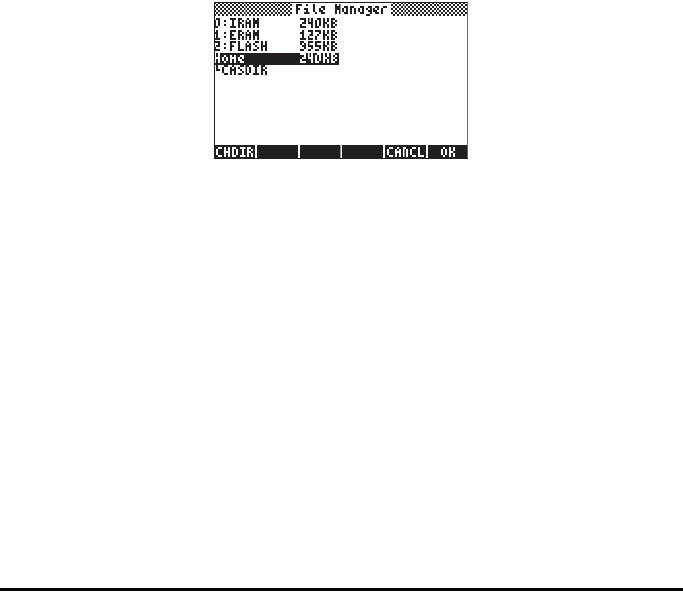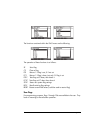
Page 26-1
Chapter 26
Managing memory
In Chapter 2 we introduced the basic concepts of, and operations for, creating
and managing variables and directories. In this Chapter we discuss the
management of the calculator’s memory, including the partition of memory and
techniques for backing up data.
Memory Structure
The calculator contains a total of 2.5 MB of memory, out of which 1 MB is used
to store the operating system (system memory), and 1.5 MB is used for
calculator operation and data storage (user’s memory). Users do not have
access to the system memory component. To see the way in which the user’s
memory is partitioned, use the FILES function („¡). A possible result is
shown below:
This screen indicates the existence of three memory ports, besides the memory
corresponding to the HOME directory (see Chapter 2 in this guide). The
memory ports available are:
Θ Port 0, labeled IRAM
Θ Port 1, labeled ERAM
Θ Port 2, labeled FLASH
Port 0 and the HOME directory share the same area of memory, so that the
more data stored in the HOME directory, for example, the less memory is
available for Port 0 storage. The total size of memory for the Port 0/HOME
directory memory area is 241 KB.


















